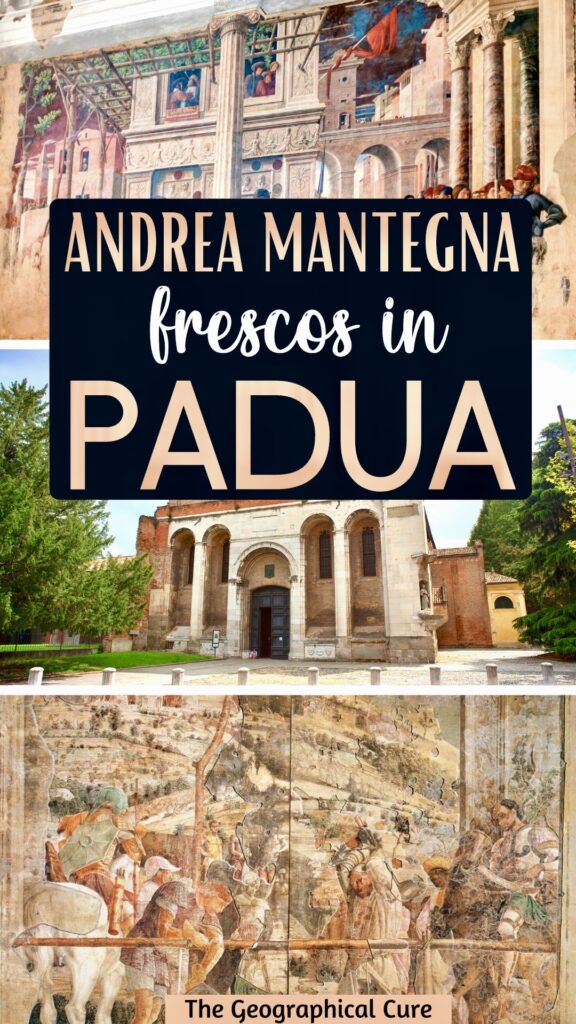Planning a trip to Padua? Don’t miss the chance to see the magnificent frescos by Andrea Mantegna in the Church of the Eremitani.
These paintings are one of the most important fresco cycles of the Renaissance and showcase Mantegna’s exceptional talent. Although the frescos were damaged during WWII, they are restored and remain a crucial representation of Mantegna’s early career.
Who Is Andrea Mantegna?
Mantegna was one of the greatest painters of the Renaissance. He was known for his pioneering approach to perspective and composition. His work often featured classical and mythological themes.
READ: One Day in Padua Itinerary
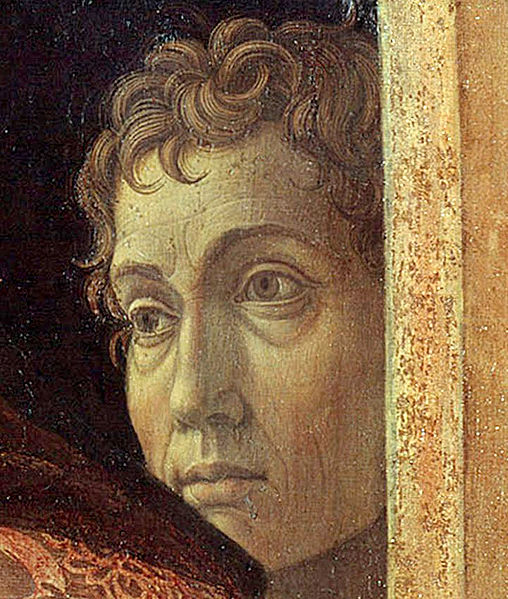
Mantegna’s paintings are characterized by sharp lines, precise detail, and bold use of perspective. He was one of the first artists to use foreshortening, a technique that involves depicting objects as they appear when viewed at an angle. This technique results in a striking illusion of depth and three-dimensionality.
Mantegna grew up in Padua. His formative years coincided with a period when the Florentine artists Giotto and Donatello lived in the city. They likely influenced his work, along with the Paduan painter Francesco Squarcione.
Art historians believe that Mantegna may have been a student in Squarcione’s workshop, where developed a humanist appreciation for antiquity.
In 1448, a wealthy merchant from Padua named Alberto Ovetari commissioned the painting of frescoes in his chapel located in the Eremitani church. He left an endowment in his will to fund the project, which was to depict scenes from the lives of Saints Christopher and James.
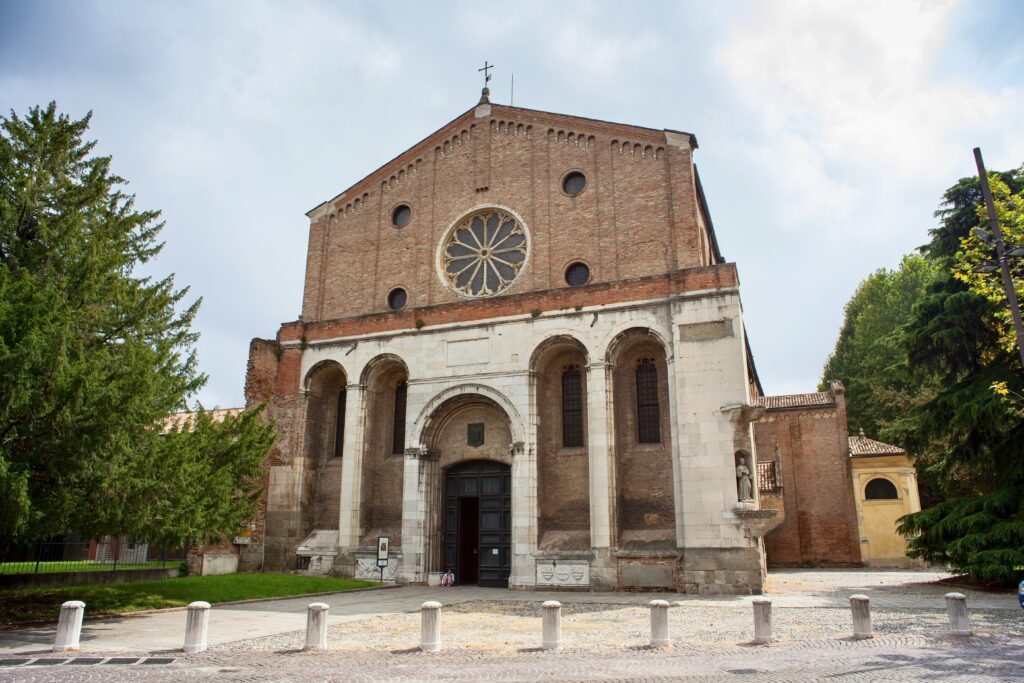
Mantegna was one of several painters commissioned for the project, along with Giovanni d’Alemagna, Antonio Vivarini, Niccolò Pizzolo.
Each artist was assigned a specific task. Mantegna and his cohort were assigned the task of painting scenes from the life of Saint James. In the end, Mantegna took control of the project and did much of the work.
This was an early period in Mantegna’s career, as he was only 17 years old when he began painting the frescoes.
Later in his career, Mantegna moved to the Gonzaga court in Mantua. There, he painted some of his most famous works, including the Camera degli Sposi and the Triumphs of Caesar (now in London’s Hampton Court Palace).
However, the story behind the Mantegna frescoes in the Church of Eremitani is a devastating tale of destruction and rebirth.
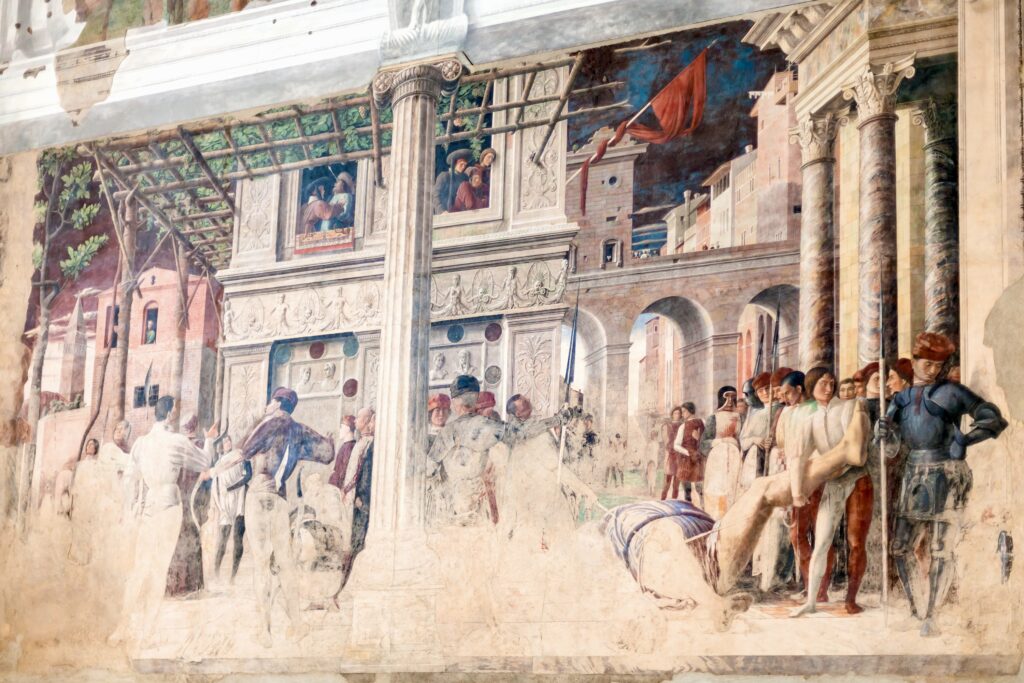
Destruction of the Mantegna Frescos In Padua
The Church of the Eremitani was founded in the 13th century by a group of Augustinian monks. They were hermits seeking a peaceful and contemplative way of life. The original church was constructed in a simple Gothic style.
The church you see today is largely a reconstruction of the original church. The reason is that, in March 1944, the church was hit by four Allied bombs in WWII.
A majority of the church’s artworks were destroyed or damaged, including Mantegna’s frescos. In fact, if you visit the church, you’ll see black and white photographs documenting the damage.
The greatest casualty of the bombing was the fresco decoration in the Ovetari Chapel in the right transept. 88,000 shattered fragments were salvaged and put into storage. But a considerable amount of the fresco was lost forever.
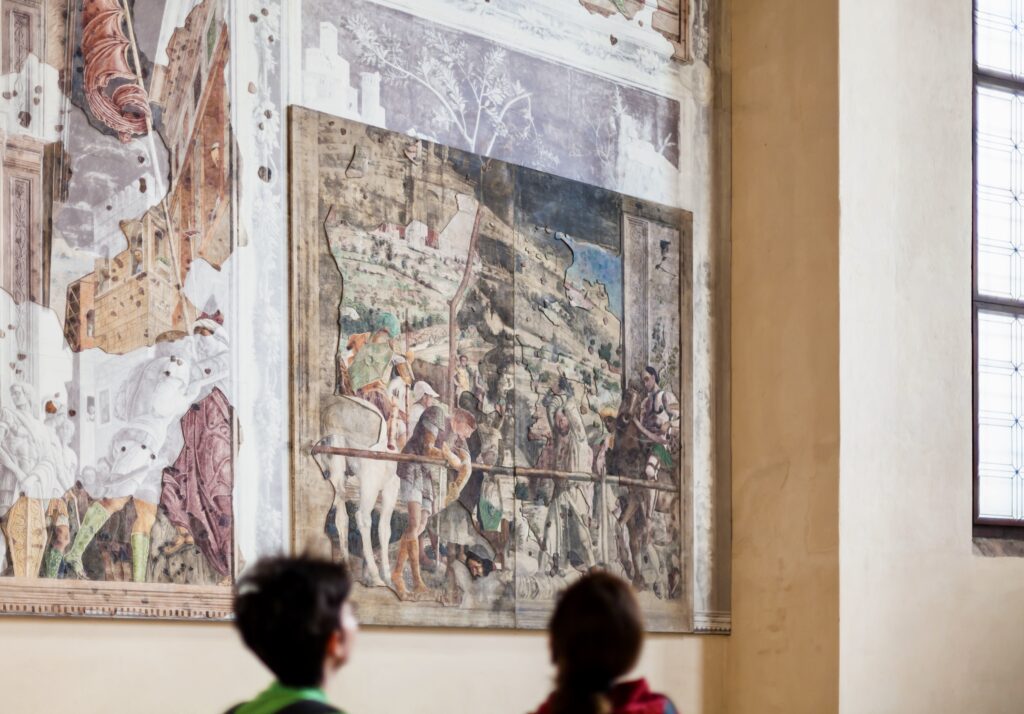
Only two of fresco scenes escaped unscathed — The Assumption of the Virgin and St. Christopher’s Martyrdom. They had the good fortune to be detached and removed right before the war. All of the other frescos were destroyed.
Restoration of Mantegna Frescos In Padua
Beginning in 2000, a heroic restoration effort was launched with the goal of reassembling the fresco, which was now like a jigsaw puzzle.
It was carried out by a team of restorers from the University of Padua. It took several years to complete, and involved a team of expert conservators, art historians, and architects.
They worked painstakingly to reassemble the fragments of the Mantegna frescoes as accurately as possible. To do this, they used black and white photographs from the 1920s and computer technology.
The restoration process involved cleaning the remaining fragments of the frescoes, stabilizing the damaged areas, and reconstructing the missing sections of the artwork. In-painting was used to recreate the missing portions.
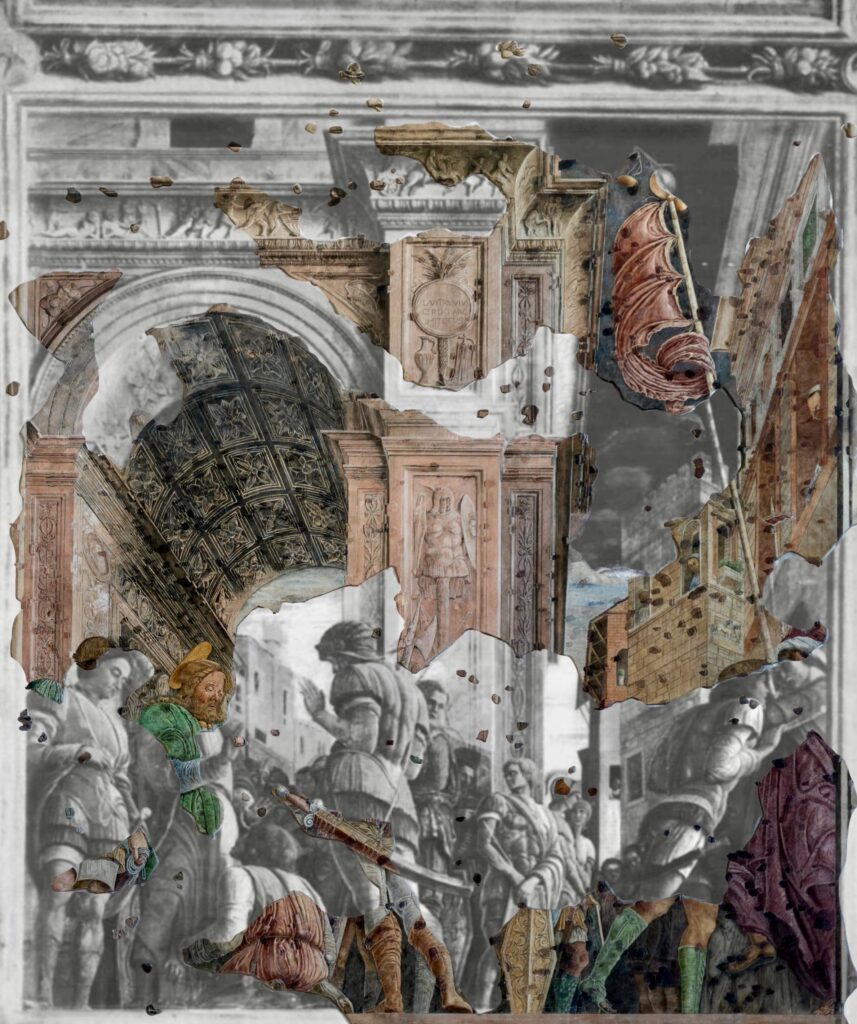
The Mantegna Frescos Today
The restored Mantegna frescoes were unveiled to the public in 2006. The restoration effort is considered a triumph of art conservation and the Mantegna frescos remain a towering achievement of Renaissance art.
The reconstruction makes it a bit hard to really experience the fresco. You’re busy looking at the fragments and missing bits. But it’s an interesting testament to the violence and destruction of WWII.
There are 13 scenes in total, 6 on each side wall and the Assumption of the Virgin Mary on the back wall of the chapel. The scenes are further broken up into three horizontal tiers.
The two sections of the fresco that were detached are back in situ. They give a clear impression of Mantegna’s early style. You can also see a reconstruction of one of his most famous masterpieces, St. James Led to his Execution.
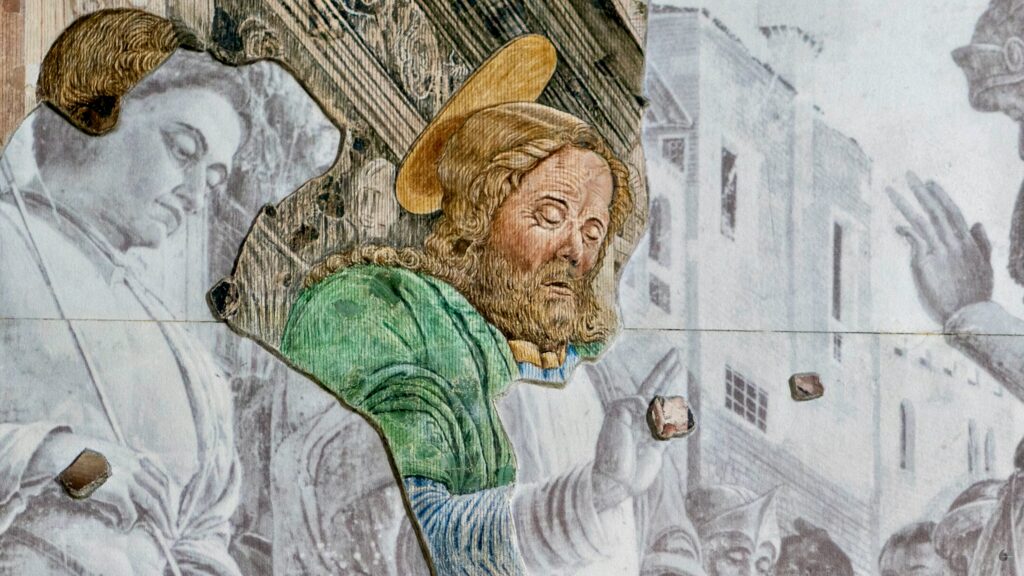
Despite its deteriorated condition, this image of St. James is one of the most celebrated images in art history. St. James is shown with a halo. He has just performed a miracle and a witness drops to his knees before the saint.
What is most notable about this painting is the daring use of the “worm’s eye view” perspective. The spectator’s view is as if you were a worm looking up at the soles of the feet.
Due to this perspective, the architecture in the scene appears massive and grandiose. The Christian martyr’s miraculous act, set against the backdrop of Roman power, signifies to the viewer the eventual triumph of Christianity over the dominant Roman Empire.
You can also see Mantegna’s obsession with the Classic world in this fresco. He uses classical architecture, figures are dressed in armor, etc. The setting of the painting is almost as important as what’s going on.
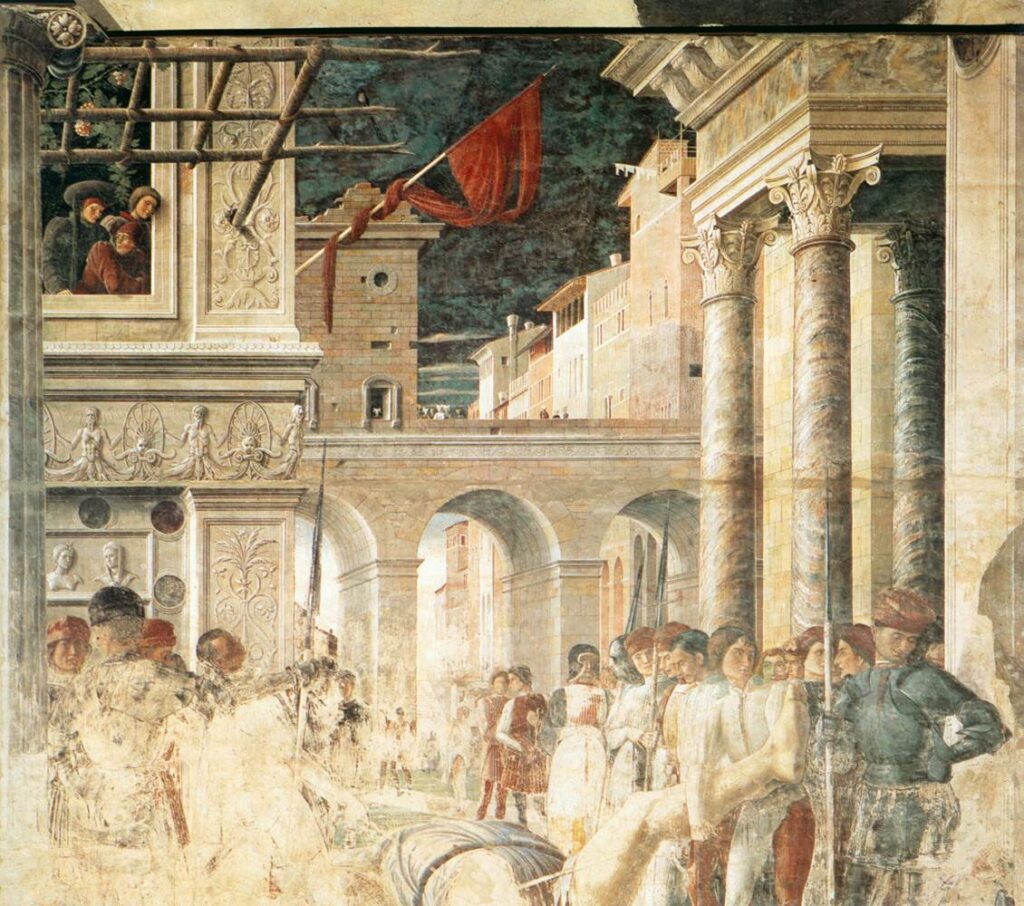
Two other famous scenes are the Martyrdom of St. Christopher and the Transporting of the Body of St. Christopher, divided by a fluted column. Despite being detached from the walls, they are still in poor condition. This is probably due to their exposure over time to humidity, temperature fluctuations, and light.
On the right hand side of the painting, you can make out St. Christopher’s body in a foreshortened position. He has just been shot down with arrows.
In a whimsical detail, men are shown trying to move the giant saint by pulling on his leg. Another somewhat playful detail is a gentleman in a window in the background with an arrow through his eye.
Despite the painting being divided into two parts, the architecture in the background is continuous and ornate, with columns, arches, polychrome, and a wooden pergola. These details show Mantegna’s keen interest in architectural perspective.
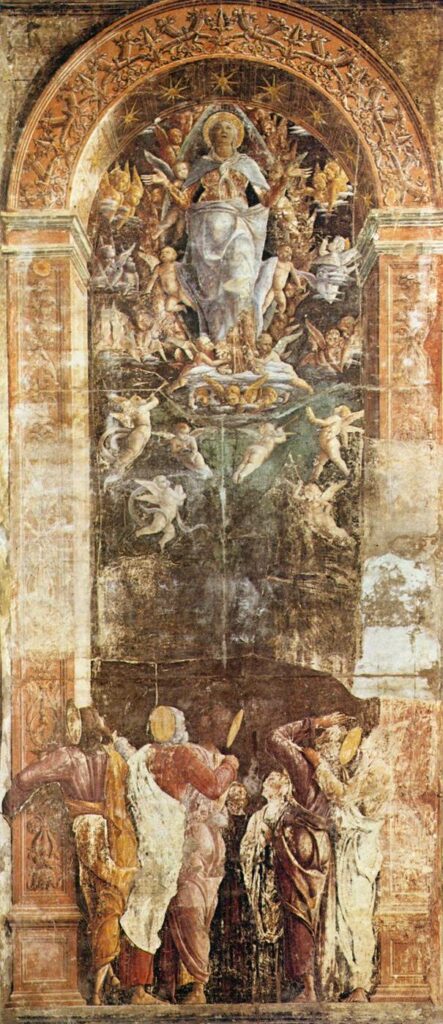
The last major piece, that has largely survived, is the Assumption of the Virgin Mary. In it, Mary is passively assumed, body and soul, into heaven under a 3D architectural dome. She’s surrounded by a fantastical array of angles and putti.
The apostles stand below looking up at Mary. Two of them stand in front of columns, another novel device of perspective from Mantegna.
But there are only 8 apostles depicted in the scene, instead of 12. In fact, at the time, Mantegna was sued over the missing apostles.
Another missing element is the sarcophagus from which Mary was assumed into heaven. This was probably omitted because there wasn’t room for it in the pictorial space available.
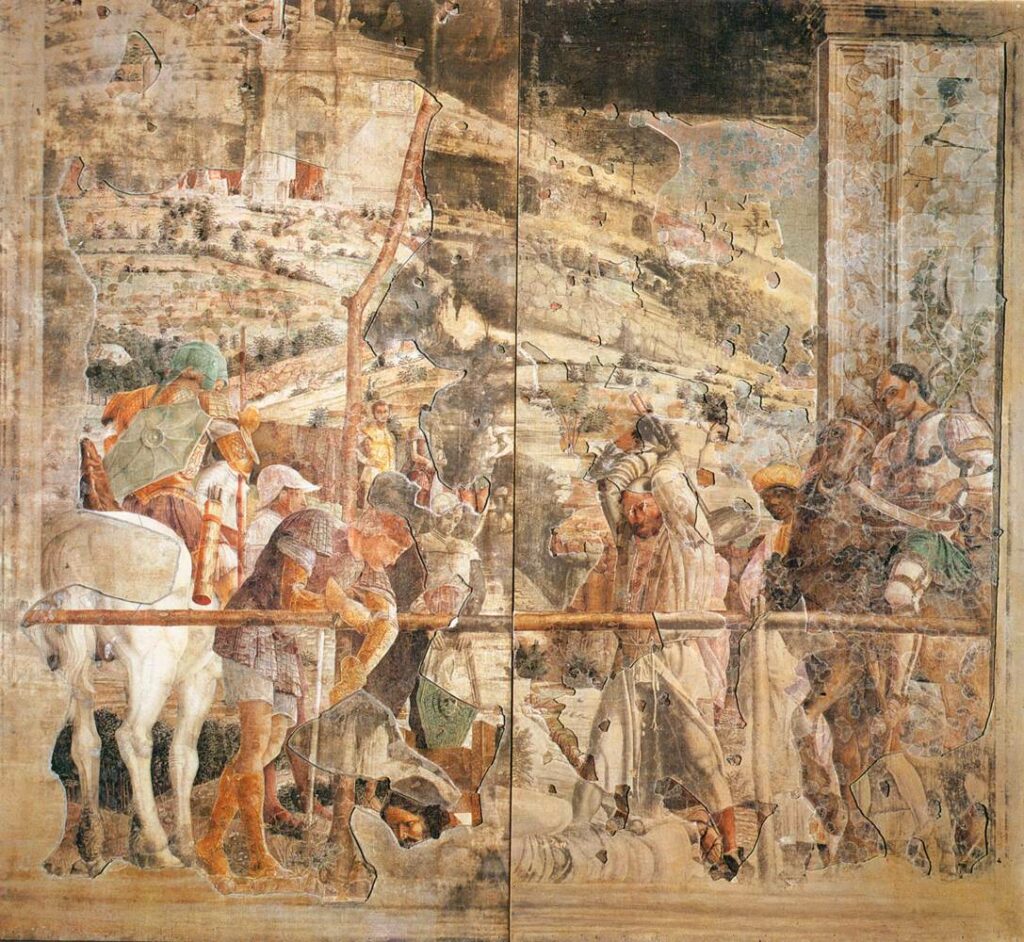
Practical Tips For Seeing Mantegna’s Frescos in Padua
Where: Church of Eremitiani in Padua
Address: Piazza Eremitani 9
Hours: 7:30 am to 12:30 pm & 3:30 pm to 7:00 pm. On weekends, open at 9:00 am
Entry: Free
Pro Tip: The Eremitani is right next to the Scrovegni Chapel where you can see spectacular frescos by Giotto.
I hope you’ve enjoyed my guide to the Mantegna frescos in Padua. You may enjoy these other Italy art guides:
- Best Museums in Rome
- Best Museums in Florence
- Famous Paintings in Venice
- Famous Artworks in Milan
- Famous Paintings In Florence
- Italy Art Bucket list
- Guide to the Vatican Museums
- Guide to the Uffizi Gallery
- Guide to the Borghese Gallery
If you’d like to see the Mantegna frescos in Padua, pin it for later.
